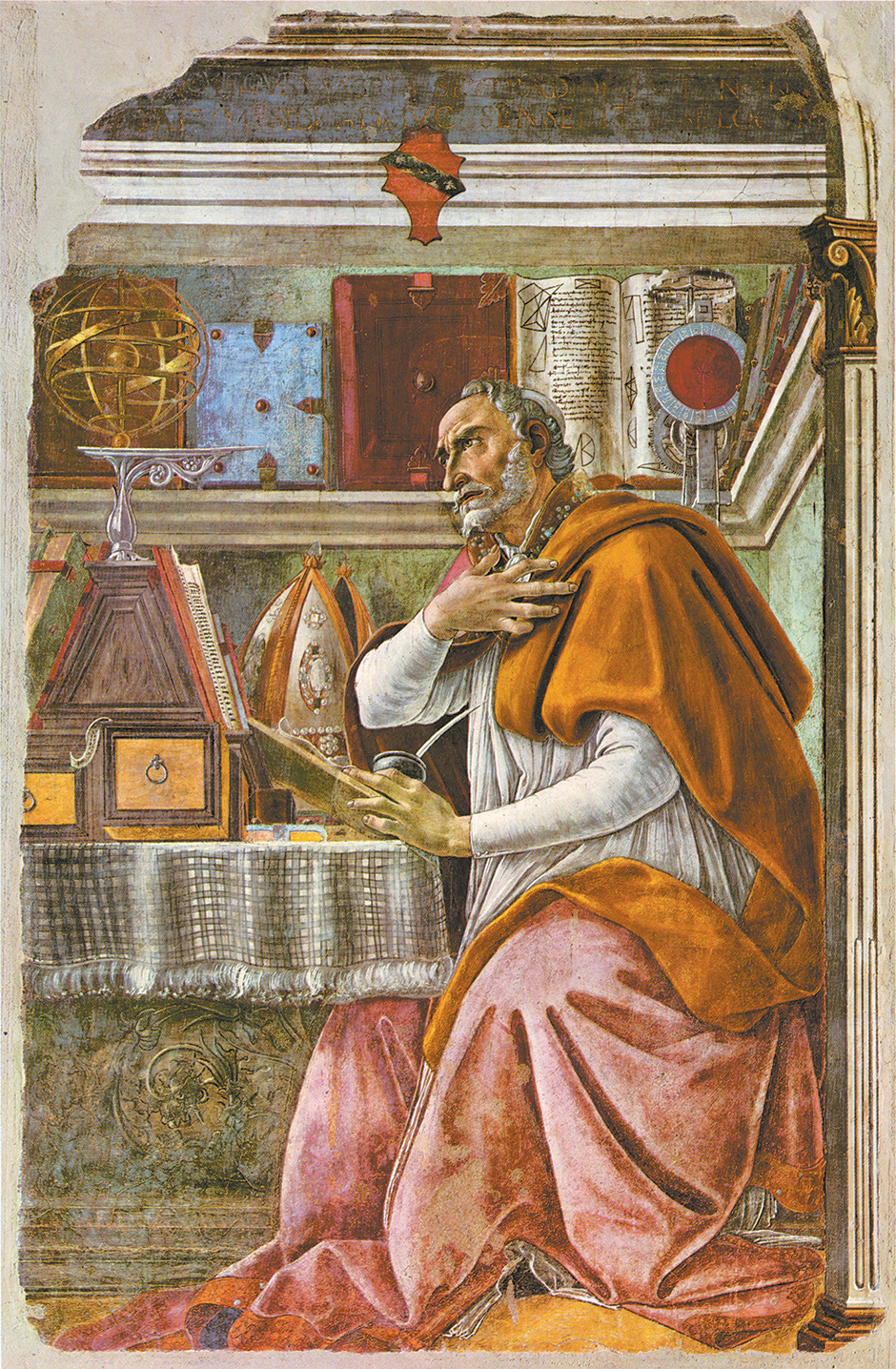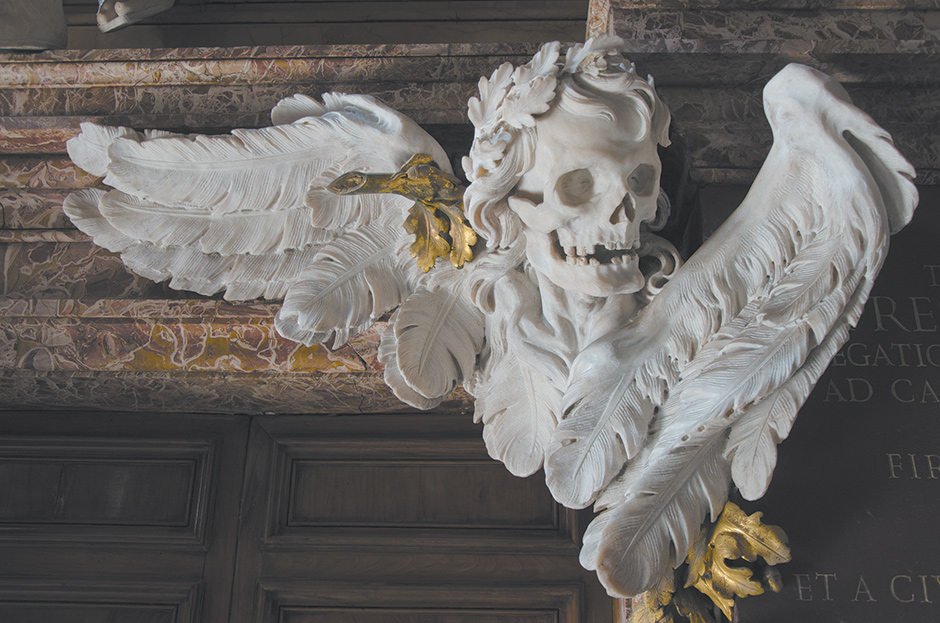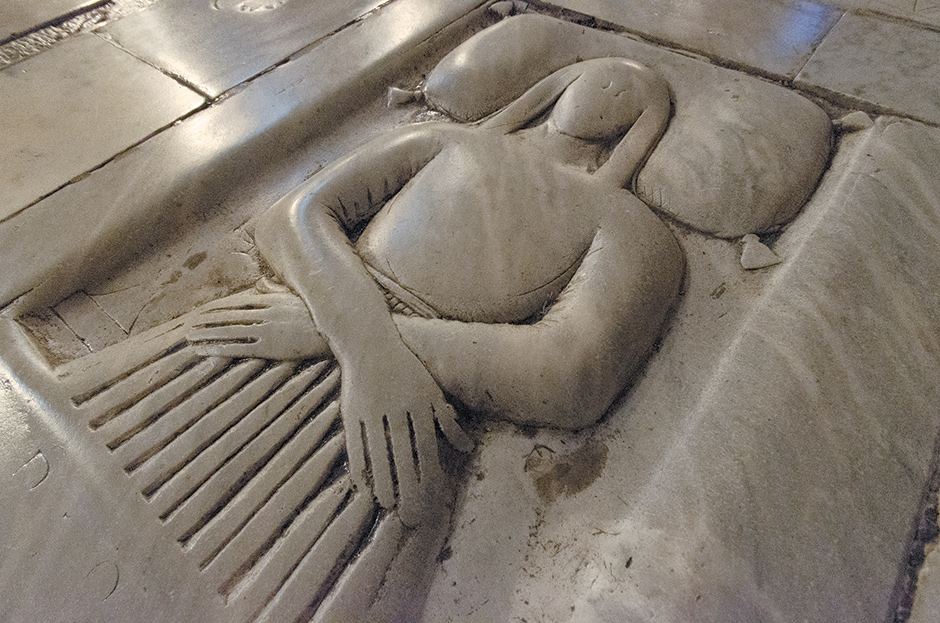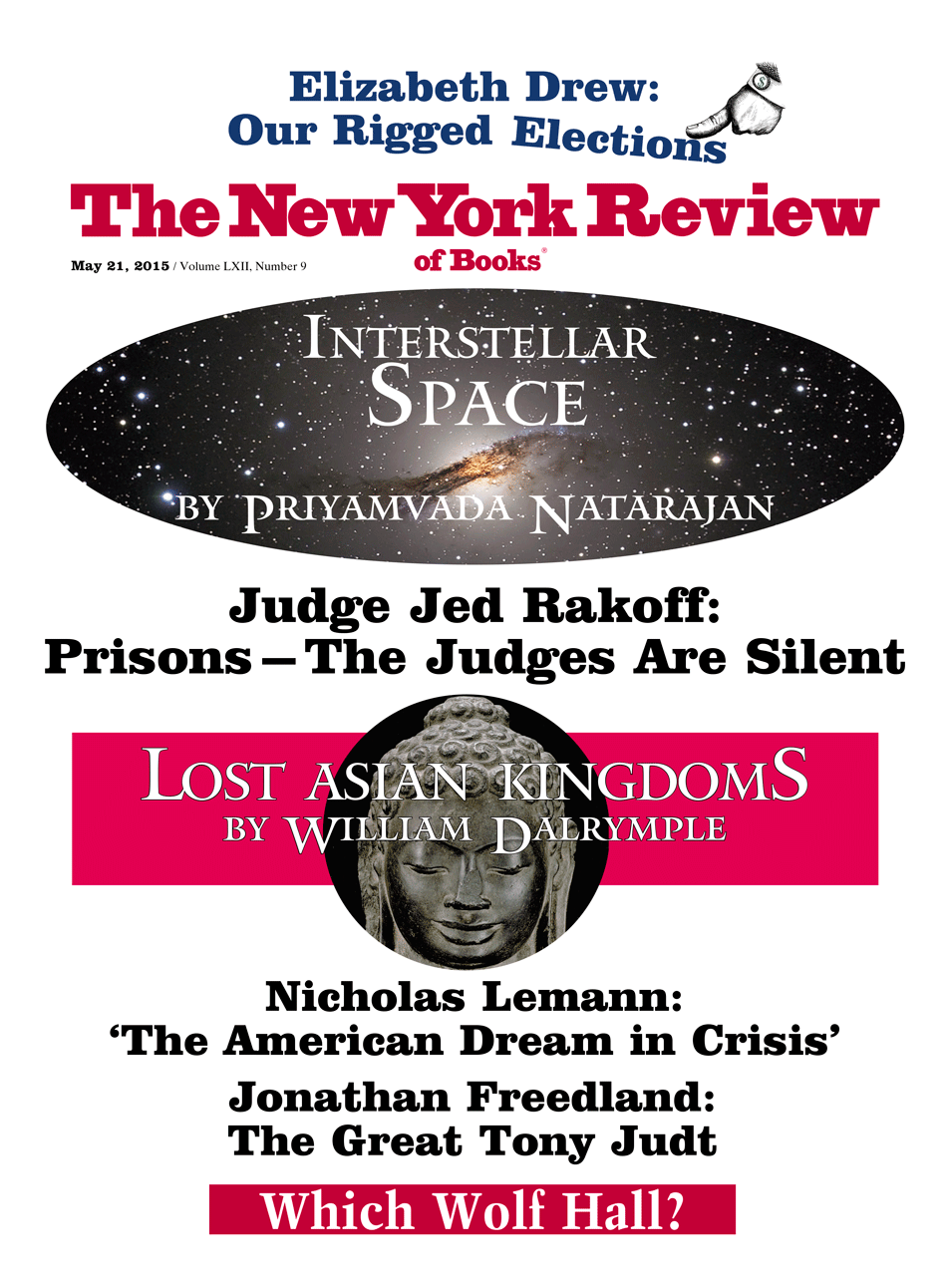Faith and money lie at the core of all religious institutions, and although faith can exist without money, religious institutions cannot. It was hardly surprising that the French theologian Alfred Loisy declared in 1902 that although Jesus proclaimed the coming of the celestial kingdom, it was the church that actually arrived (“Jésus annonçait le Royaume et c’est l’Église qui est venue”). His insights here and elsewhere led ultimately to his excommunication, but he was right to emphasize the transition from the otherwordly aspirations of early Christianity to the accumulation of ecclesiastical wealth. Jesus famously advised a rich young man to sell what he possessed and give to the poor, and in return for this generosity he would store up treasure in heaven. But it was never clear how to draw upon that treasure, invest it, or exploit it for advantage in this world or the next.
Christians were eventually able to work out systems in which personal wealth that had been acquired on earth could be deployed to allay anxieties about what lay ahead after death. Giving to the poor (almsgiving) could be seen as a kind of insurance for a benevolent reception in the world to come and as a payment for prayers for and to those who were already dead. Alms together with prayers in celebrating the Eucharist were naturally channeled through the church, which encouraged donations for such manifestations of piety and for efforts to reach beyond the grave. This proved to be arguably the most successful development campaign for any institution in the Western world.
Christian success in attracting money to the church depended inevitably upon uncertainties and fears about the afterlife. The mechanisms to suppress dread of the future, while simultaneously adhering to Jesus’s explicit teaching, necessarily presupposed giving away wealth to the poor or, at least, ensuring that it was transmitted to the poor. It was in the interest of any donor to prepare for the life to come and to address in some way the persistent Christian emphasis on sin, which stood forever in need of expiation. It is easy to understand the theological desperation of Augustine when confronted with the Pelagian heresy. Its founder, Pelagius, believed that it was possible to live a sinless life, free from any sin inherited at birth, and Augustine was quick to realize that if there were no sin there could be no argument for giving money to expiate it.
In his extraordinary new book, The Ransom of the Soul, which is the third that Peter Brown has devoted to the function of money in the early centuries of Christianity, he picks up on themes he introduced in 2000 in his Jerusalem Lectures on poverty and subsequently expanded at length in his recent book Through the Eye of a Needle.* The new work, which is one of his shortest, is also prodigiously original—an astonishing performance for a historian who has already been so prolific and influential. It complements his two earlier books but is not, as he tells us explicitly, a spin-off from the earlier writings but a completely fresh look at the issue of Christian wealth and giving, with special attention to changing perspectives from the mid-third century to the late seventh. He is concerned to avoid a master narrative, in which the history of the church may be judged to have followed some kind of linear evolution. He prefers to stress the shifting principles of giving across time and place from the days of the great plague under Cyprian in North Africa (circa 250–258 AD) down to the Franks in Europe. He leads us straight into the Middle Ages by an entirely new path.
Brown’s title comes from the biblical book of Proverbs, traditionally associated with Solomon. In the eighteenth chapter we read, “The ransom of a man’s soul is his wealth,” although some translations into English render nephesh as “life” rather than “soul.” Brown readily admits that the basic meaning of this seems to be that anyone could secure his life in this world if he had enough money. As he puts it, “A rich man could use his wealth to save his skin, as a poor man could not.”
But after Platonism seeped ineradicably into early Christian theology and the meaning of nephesh, Greek psyche, and Latin anima became increasingly complicated, the old saying ascribed to Solomon seemed to imply that money could do something to improve or secure your soul in a much more theological sense, both in life and in death. For the real terrors lurked in the afterlife, where so much was uncertain until that magisterial judgment that God would ultimately pronounce upon the deceased. It was in this twilight zone of theology that a solution had to be found to address the paradox of giving away one’s wealth to the poor while redeeming one’s soul by means of the wealth that one was enjoined to give away.
Advertisement
It clearly would not do to take cash out into the street and distribute it directly to the indigent. But the church was ready and waiting to undertake the distribution on behalf of the pious rich, and almsgiving soon became the optimal way to pierce the gloom of the afterlife. Peter Brown explains this portentous transition by an arresting comparison between the poor and the dead. He identifies two “highly charged and paradoxical poles of the Christian imagination: the socially dead and the physically dead—the poor and the souls of the departed.” It thus became possible to ransom one’s own soul by almsgiving but also, through prayers at the Eucharist, the souls of dear ones who had already died.
Brown begins with a survey of the Christian afterlife that he ingeniously frames with a relatively obscure book on the age to come (futurum saeculum) written by Julian of Toledo in the late seventh century. Julian raided his library to assemble edifying quotations for a dying bishop who needed comfort and consolation. Beginning with the ruminations of Cyprian of Carthage during the great plague of the third century, Julian provides a series of examples that show how notions of the afterlife changed between Cyprian’s time and his own. In Cyprian’s day martyrs went straight to heaven, whereas most mortals had to anticipate a long waiting period of probation until their future in the next world would be established. This was a time long before the creation of Purgatory, but it was already a time that could conceive of prayer and intercession before the final judgment.
About a century and a half later, when Augustine preached at Hippo in North Africa about the expiation of sin through giving to the church, the great bishop could be eloquent about a purging fire (ignis purgatorius) that foreshadowed the later Purgatory. Augustine was well aware of its efficacy, but he preferred not to dilate upon the purging flames. As Brown observes, with a wry nod to Augustine’s pastoral genius, “He spoke of it [the ignis purgatorius] always with the reticence of a scientist who realizes that he made a discovery that might be used to create a devastating secret weapon.”
All the texts about the afterlife that Julian of Toledo collected, with their reflections of changing Christian doctrines about what happens to the soul at death, incorporate a solid core of pagan practice that underlay early Christian attitudes and imperceptibly merged into Christian teachings. This goes far beyond the purely philosophical impact that came with Christian immersion in the works of Plato. In the Greco-Roman culture into which Christianity was launched there was a long tradition of mediation with the dead on the part of the living, and money had been an important part of that tradition. Like the Christians, rich pagans spent their wealth in the present with a view to rewards after death.
Most conspicuously this munificence took the form of lavish gifts for both tombs and civic buildings, and Brown rightly emphasizes that philanthropy of the latter kind was conceived as “civic euergetism.” “Euergetism” derives from the Greek word for a benefactor, euergetês, and encompasses various forms of self-aggrandizement and contributions to a community that included funding for festivals, competitions of various kinds (athletic and oratorical), endowments to support both education and commemoration, and the construction of great monuments that would long outlast the donor. The ancient Greek word for this kind of activity was philotimia, which literally means a love of honor. This was an honor that would survive long after the benefactor had disappeared.
When pagans confronted the burial of their dead, the rich could honor both the deceased and themselves with extravagant tombs. The innumerable tombstone inscriptions in which the dead speak out from their graves to those who pass by leave no doubt that the pagans of antiquity felt that communication between the living and the dead was a real possibility. But this was not a one-way exchange, in which the dead importuned the living. It was no less possible for the living to address the dead through religious rituals. Pagans deployed these rituals to assure continued contact between the living and the dead. Their arrangements were often organized within families, not only after the death of children or spouses but in anticipation of the death of the donors.
From the end of the third century BC an early example of an endowment for bringing together family members both before and after their demise comes from the testament of an affluent woman called Epicteta on the island of Thera (the modern Santorini in the Aegean Sea). Her husband had already set up a sanctuary of the Muses—a Museum—to honor the memory of their late son and to prepare a monument for him and other members of the family after death. In due course Epicteta’s husband died and was buried in the monument.
Advertisement
In her will she prepared for her own inclusion in the sanctuary and the eventual rites of remembrance that would bring surviving members of the family together for sacrifices in honor of the dead, after which the living and the dead would dine together. What historians call funerary banquets depended upon sacrifices offered by the living. They took place inside a consecrated sanctuary that came to be known as a hêrôon, because the honored dead were now recognized as heroes. The meal with the dead (often called by the German name Totenmahl) had a long tradition in ancient Greek culture. By the time that Christianity arose in the Mediterranean world it had been substantially enlarged through widespread endowments and shrines that owed their origins to the anxieties as well as the generosity of the rich.
For instance, a newly discovered inscription from Anatolia in Turkey records an exceptional endowment of a shrine by a bereaved father to honor a son who died in an accident. The father took this action because the dead youth had appeared to him in dreams and visions and encouraged him to establish a tomb and an altar for a cult that would serve as a lasting remembrance. This is an unusual case in which the dead can be seen as interceding directly with the living to solicit an endowment on the part of those who were left behind. But endowments of this kind, initiated by family members before or after bereavement, were an integral part of the early Christian world and go a long way to explain evolving Christian procedures for securing access to the afterlife, and to those who were already there. The common denominator in these pagan cults is their origin in munificence. They all cost money and often depended upon endowments.
Peter Brown aptly invokes Christian encounters of the living with the dead in the enclosed portico, known as a triclia, which was discovered among the catacombs beneath the basilica of San Sebastiano along the Appian Way outside Rome. In the third century this was believed to contain the remains of Peter and Paul, to whom visitors appealed in graffiti that still survive there. Clearly these apostles were believed to be capable in death of interceding on behalf of petitioners who came to the cemetery. The attractive triclia included benches and cooking facilities to enable the living to dine in close proximity to the dead. Brown quotes the art historian Richard Krautheimer as describing a triclia as like “any tavern on the green.”
The physical closeness of the living and the dead thus opened up the barrier to the afterlife and even allowed Christians to ask the dead, and not only the apostles, to pray on their behalf from beyond the grave: “Ianuaria, take your rest well, and ask for us.” In such cases the distance between the pagan Epicteta and the Christian Ianuaria is almost imperceptible, apart from the endowment with which Epicteta founded the cult of her family. It is only the manner of funding for such memorials that distinguishes them from the tombs along the Appian Way. We need hardly be surprised that in late antiquity some Christians founded their own hêrôa to serve as tombs of the traditional pagan kind, but duly adorned with Christian symbols, such as the cross and fish (icthys). One inscription from a Christian hêrôon specifies that the space is reserved for “the most excellent singers of psalms.”
If Christian hêrôa were a late and relatively rare relic of the old pagan munificence on behalf of city and family, the Christianization of the Mediterranean world after Constantine increasingly channeled private wealth through the church, where prayers both to and for the dead could be programmed through the Eucharist. The transformation of almsgiving from giving to the poor into giving to the church became, as Augustine had seen during the Pelagian controversy, inexorably bound up with the expiation of sin without ever losing its connection with money. As Brown observes, “Sin came to be spoken of in financial terms…. Sin was a debt.”
In fact this conjunction of debt and sin had been spelled out in the Lord’s Prayer, as can be seen by comparing the versions of it in the gospels of Matthew and Luke. Brown cites the Vulgate Latin text for Matthew’s Dimitte nobis debita nostra (“Forgive us our debts”), and he observes that the debts here (debita) are actually sins. Although this rendering accurately conveys the Greek opheilêmata—debts—in Matthew’s version of the Lord’s Prayer, Luke’s text prays explicitly for the removal of sins (harmartias), in return for which the worshiper promises to forgive any debtor. Here the Vulgate correctly reads peccata (sins).
So the equation of sin with debt was there from the beginning. It provided an unmistakable monetary option for wiping away sin. But as Augustine insisted, sin could never be wiped out altogether, and hence the need for expiatory giving would never entirely go away. The ransom of the soul both in this world and the next required payments without end—a consequence that the unknown author of the verse ascribed to Solomon in Proverbs probably never anticipated. Brown rightly says that this theology “meant, in effect, that perpetual giving was the counterpart of perpetual sin.”
After surveying the chiaroscuro of the afterlife between Cyprian and Julian of Toledo, Brown narrows his gaze to concentrate upon North Africa and Gaul in late antiquity. He traces telling differences between North Africa, where Augustine encouraged his congregation in habits of generosity, and the post-Augustinian evolution of thought about prayer and penance in Gaul. He begins with Salvian at the great monastery on one of the Lérins islands off the Côte d’Azur. Salvian had already figured prominently in Brown’s Through the Eye of a Needle, and now Brown shows a still deeper understanding of this Rhinelander who was transplanted into Provence:
What was at stake for Salvian when he wrote on religious giving was not the creation of humdrum habits of giving among the rank and file but the movement of entire fortunes. He wrote to persuade the truly rich.
In the monastery of Lérins Salvian absorbed terrifying views of the afterlife from monks who had been steeped in the values and demons that prevailed among the monks of Egypt. As Brown puts it well, “Lérins had brought a touch of the desert of Egypt to within sight of the coast of Gaul.”
The growing ferocity of visions of the afterlife bred fear. This in turn encouraged the spread of penance in Gaul far beyond anything Augustine had promoted. Hilary of Arles, who had been a monk at Lérins, evoked the fires of Hell and urged his flock, “Go out, go out,” because there would be no exit from the flames on the other side. Brown associates this preaching with a group of charismatic bishops, such as Faustus of Riez and Caesarius of Arles, who had led what he calls “the momentum of the penitential drive” in Gaul. With the spread of Merovingian rule in the later sixth century this momentum was taken up by the government itself, and through a series of proclamations the Frankish kings determined that it was necessary to impose penance upon a part of the population whose sins threatened the community as a whole. Brown powerfully describes it as “a call to order in this world.” This meant that the world beyond and the present world were now commingled.
Proceeding by steps from Salvian to Gregory of Tours, Brown summons up a Christian who is not so much a harbinger of the approaching Middle Ages as a preacher to “confident persons, only too happy with the things of this world.” Gregory’s mission was to shake them up with reminders of the divine judgment to come. He did not offer a new vision to separate the ancient world from his own but remained firmly anchored in the past. He had the misfortune of serving the church during a time of civil war in the later sixth-century Frankish kingdom. This may account to some extent for his reviving an ancient practice by writing a history of his own time. In the last book of his History, Gregory even found an opportunity to describe his confrontation with a priest who declared that he did not believe in the resurrection of the dead. Gregory’s roots in the past bore fruit in his participation in the turmoil and materialism of the present, and so he can serve as yet another example of change and flux among the Christians of late antiquity.
It is only with the arrival of Columbanus in northern France at the end of the sixth century that Brown’s reader confronts an altered world, rather than one in constant debate and change, and can finally glimpse what we might call the Middle Ages. Into the busy urban communities of Gregory of Tours, who instructed and tolerated the affluent elites of Gaul, Columbanus brought from his monasteries in Ireland a perception of a fast-approaching Day of Judgment and a new kind of monasticism that Brown characterizes as “the ground zero of a mighty spiritual detonation.”
We move now to the silence and spiritual rigor of monasteries and convents where frequent confession served to break down the willfulness of arrogant and ambitious Christians. This emotional assault, which left little space for fear, served to prepare for a more serene anticipation of the life to come. Columbanus’s rules for his monks and nuns, according to Brown, “deliberately turned upside down the codes of the elites from which they were recruited.”
It is therefore with Columbanus that we enter the Middle Ages at the end of a surprisingly long late antiquity. The piety of his followers became, as Brown presents it, “the watershed between late antiquity and the Middle Ages.” This vision of the slow and complex transition from one historical age to another, and across widely separated regions, recapitulates and reinforces the idea that Christianity had no single master narrative. It evolved in different places in different ways, and at different times. Its diversity was its most potent legacy to future generations. Its reception of Columbanus was but the latest manifestation of that diversity, and its embrace of Irish monasticism only strengthened it.
With the monks and nuns of Columbanus Peter Brown circles back to the principal theme of his book, money. The rich, who had no interest in subjecting themselves to a monastic regime, could become patrons of it and “bridge the chasm between the sacred and the profane through gifts.” Their gifts were not simply mercenary transactions to buy recognition or even prayers, although it would be hard to deny the subliminal presence of such motivation. But the gifts of the rich were, as Brown points out, an exchange from which the poor had now vanished. Almsgiving as a form of penance or a step toward expiation of sin yielded to the funding of monastic endowments, sometimes on the ancestral property of the donors, as a means of ensuring the prayers of the monks and nuns on their behalf. “Monks and nuns,” Brown observes, “replaced the poor as the intercessors par excellence.” Monasteries and convents became “powerhouses of prayer.” They became the antechambers of the celestial kingdom as well as the guarantors of the peace of the temporal kingdom.
Brown’s extraordinarily vivid panorama of money in the early church ends with what he calls “the grand finale of centuries of intercessory prayer.” It reconfigured Jesus’s promise of treasure in Heaven not only by equating it with treasure on earth, but by marginalizing the original notion that money should go to the poor as a means of assuring prayerful intercession with those who had gone before. This brings us back to the idea of ransoming the soul, as we know it from Proverbs. This idea has now become much closer to what it had been in the beginning. A person’s wealth could be deployed in this world to achieve spiritual security with financial recognition, as well as contact with saints and martyrs through prayer.
The physical properties of monasteries and convents were palpable proof of the efficacy of money and prayer. With these foundations we come back directly to the pagan roots of benefaction that had ennobled and profited the great cities of antiquity. But the comforts that monastic patrons may have bought by their munificence did nothing to alleviate the terrors of death for the monks and nuns in their communities. Those devout and prayerful persons knew all too well that their time would come, and if they were found wanting, demons would be there at their deathbed. They had no money to solicit prayer and intercession. Their souls had to be ransomed by others, and the invention of Purgatory eventually made the process of judgment much more complex than it had been in the days of Augustine’s purging fire.
Peter Brown’s subtle and incisive tracking of the role of money in Christian attitudes toward the afterlife not only breaks down traditional geographical and chronological boundaries across more than four centuries. It provides wholly new perspectives on Christianity itself, its evolution, and, above all, its discontinuities. It demonstrates why the Middle Ages, when they finally arrived, were so very different from late antiquity.
-
*
Peter Brown, Poverty and Leadership in the Later Roman Empire: The Menahem Stern Jerusalem Lectures (University Press of New England, 2002), and Through the Eye of a Needle: Wealth, the Fall of Rome, and the Making of Christianity in the West, 350–550 AD (Princeton University Press, 2012). ↩





